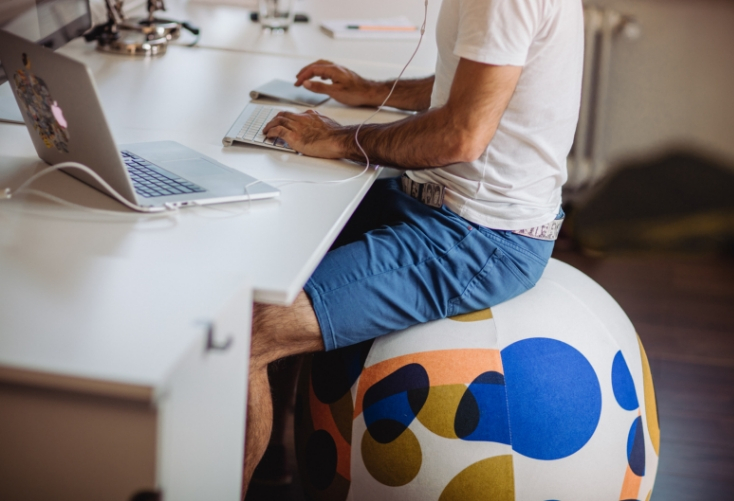- Two-thirds of office workers suffer from back pain.
- Remote workers in particular are at risk due to poor workstations.
- Wearables and apps are now hitting the market to target back pain.
If you’re a remote worker, you probably don’t have a workstation to call your own. While the footloose life of the digital nomad comes with many perks, it could leave you with back problems if you find yourself frequently hunched over a laptop or sitting at an uncomfortable workstation.
Research reveals 62% of office workers suffer from back pain, making office workers one of the most at-risk professions. Separate research also reveals 37% of remote workers have experienced back pain since they started working from home.
So, how can you protect your back as an office worker? While encouraging ‘active sitting’, workplace wellness initiatives and combating the sedentary nature of most office workers are important steps, here are a handful of hi-tech solutions that could help you at your desk:
1. The webcam coach
The Brightday app uses AI and augmented reality to measure and correct your posture at either a sitting or standing desk. There’s no additional equipment — you just need to download the software onto your computer (it works with any desktop or laptop sold after 2012).
Your webcam then monitors your posture in real time, prompting you if you start to slouch. It reminds you to take breaks from your desk and keep active. You can also access a daily training session, which focuses on a certain aspect of your posture to guide you to the correct position. At the end of the day, the Brightday app gives you further feedback and tips to help maintain a healthy back.

2. The posture training wearable
The UPRIGHT posture training device is a small white wearable that you stick between your shoulder blades. When you start to slouch, the device will gently vibrate to alert you.
The sensor uses a hypoallergenic gel adhesive strip that binds the device to your skin but is still gentle enough to remove at the end of the day. There’s a free app to help you monitor your progress, build a better posture and it also provides you with a range of personalised training sessions.
3. A tailored rehabilitation wearable
ViMove is a wearable sensor that measures and analyses the way you move. There’s a specific module that targets your back and there are also two other modules, one for your knees and another to analyse your running gait.
It retails at £1,350 and you have to visit a clinician to set up the device to get your tailored training program. But it’s also one of the most comprehensive solutions out there, incorporating both movement and muscle activity sensors to measure precisely how you bend, twist and step. You can also easily access your data and keep track of your progress via the device’s app.
While the ViMove wearable is probably the most appropriate for office workers experiencing back pain, there’s also a ViSafe device for manual workers and a ViPerform for high-performance athletes.

4. Sit down right and self-massage
You don’t have to go all hi-tech to improve your posture. The Bottoms-Up pelvic and spinal posture seat forces your pelvis into its optimal position, supporting your spine from bottom to top.
The Back Bean also promises to instantly improve your seated posture. You just pop the small, cushioned rectangle against the base of your spine and it forces you to sit up straight.
Then, there’s the Thera Cane massager. It may look a little odd with its “7 strategically placed balls for full-body massage” but this device can help you alleviate those hard-to-reach aches and pains.
Yoga balls are also an alternative to traditional seats to keep your back healthy at work, but they’re not always the most fashionable items. If you fancy a more aesthetically pleasing ball for your office, the Baola: The Orbit Edition was produced in collaboration with British artist Mike Lemanski.



 Dr. Gleb Tsipursky – The Office Whisperer
Dr. Gleb Tsipursky – The Office Whisperer Nirit Cohen – WorkFutures
Nirit Cohen – WorkFutures Angela Howard – Culture Expert
Angela Howard – Culture Expert Drew Jones – Design & Innovation
Drew Jones – Design & Innovation Jonathan Price – CRE & Flex Expert
Jonathan Price – CRE & Flex Expert












